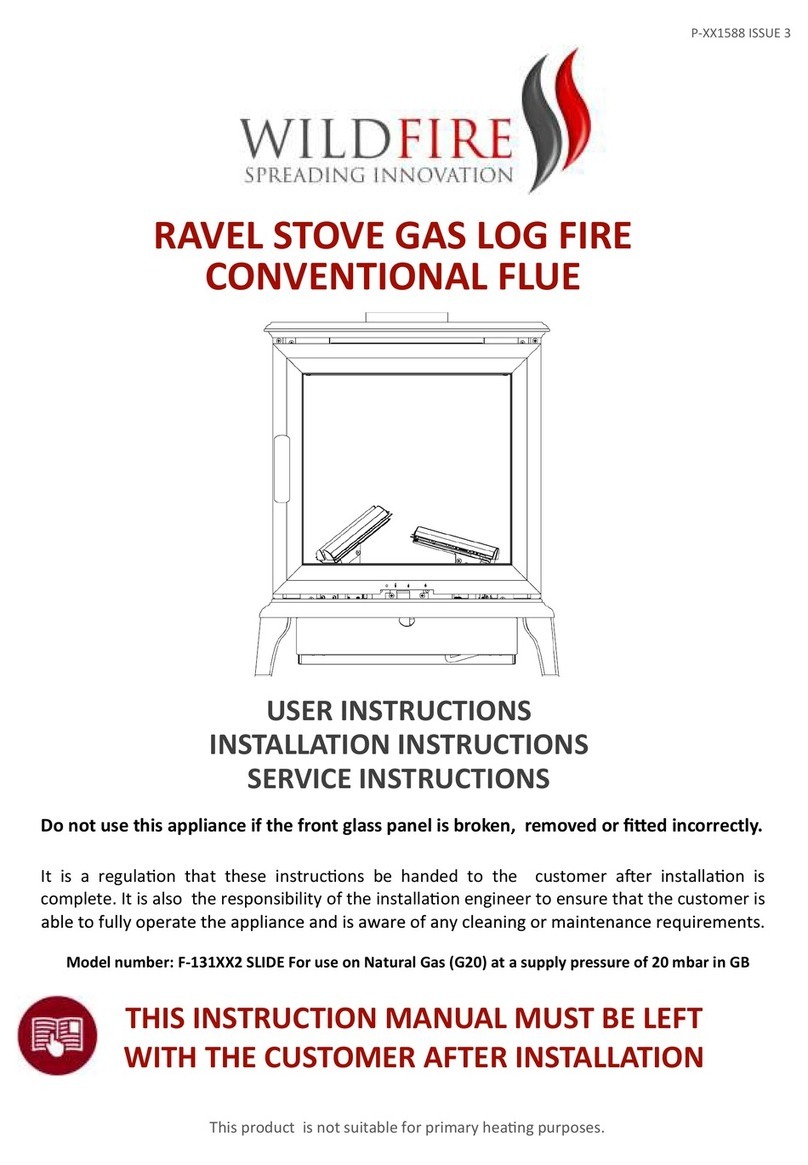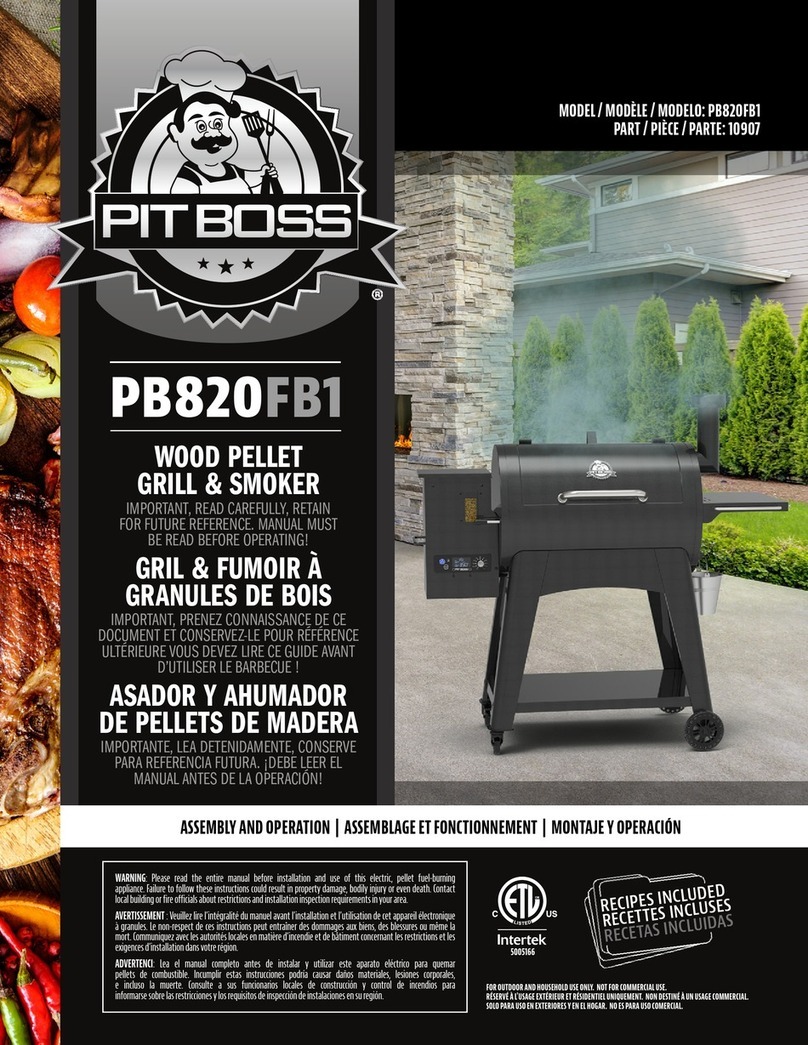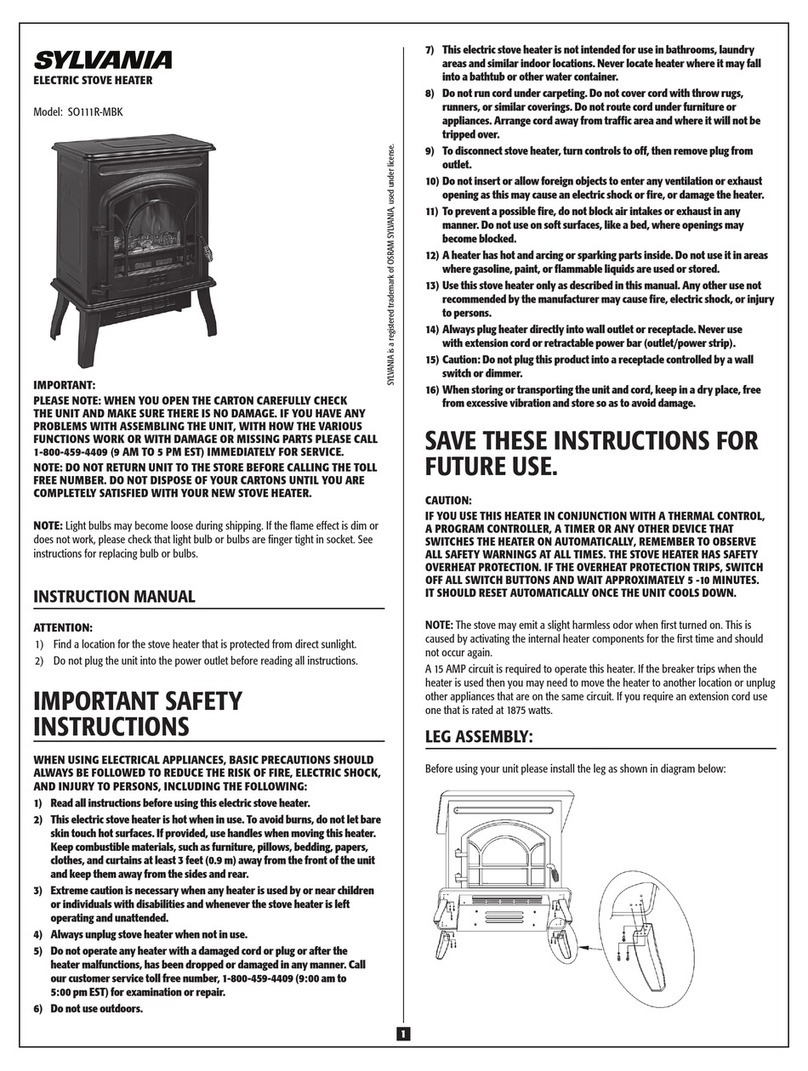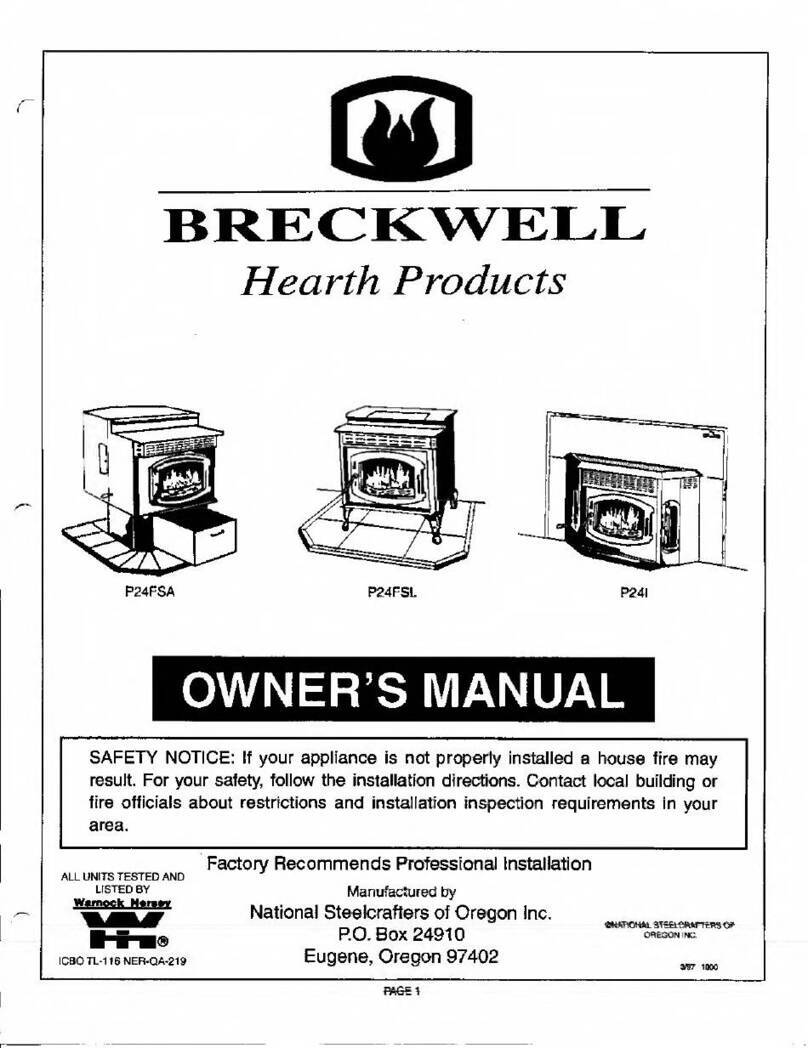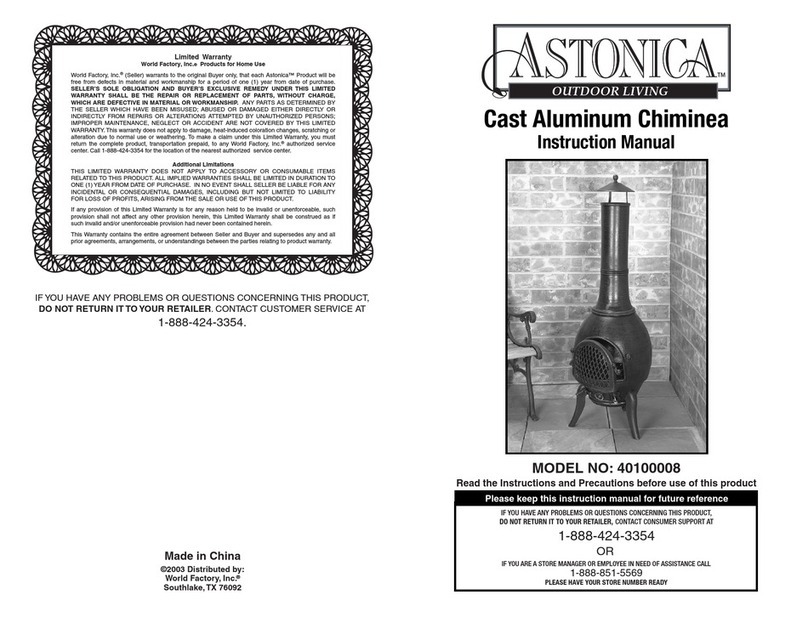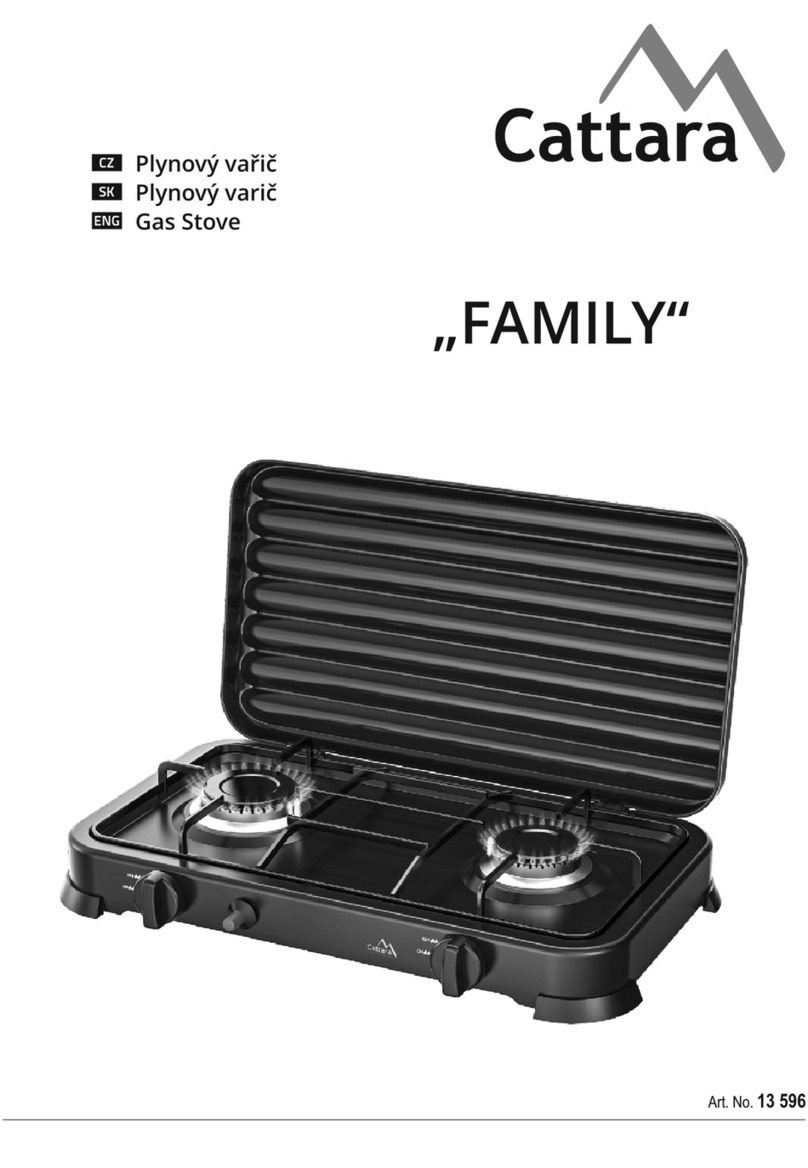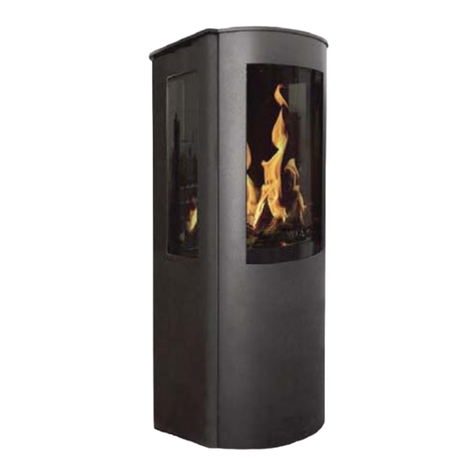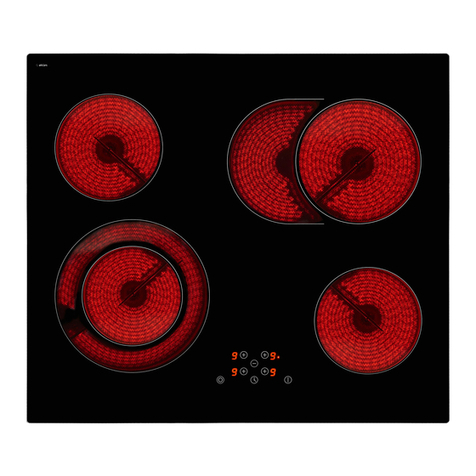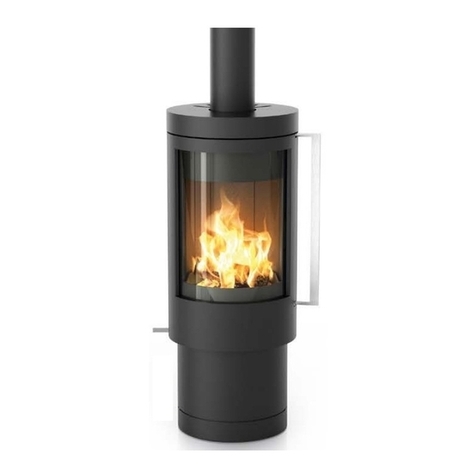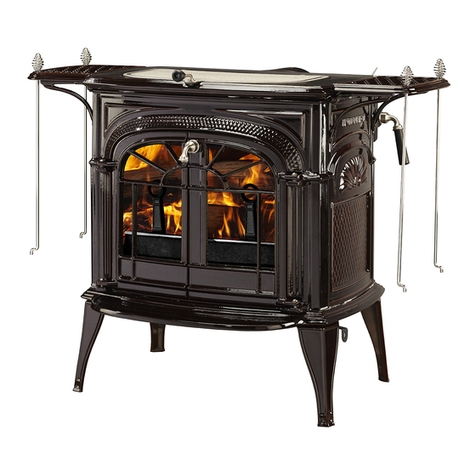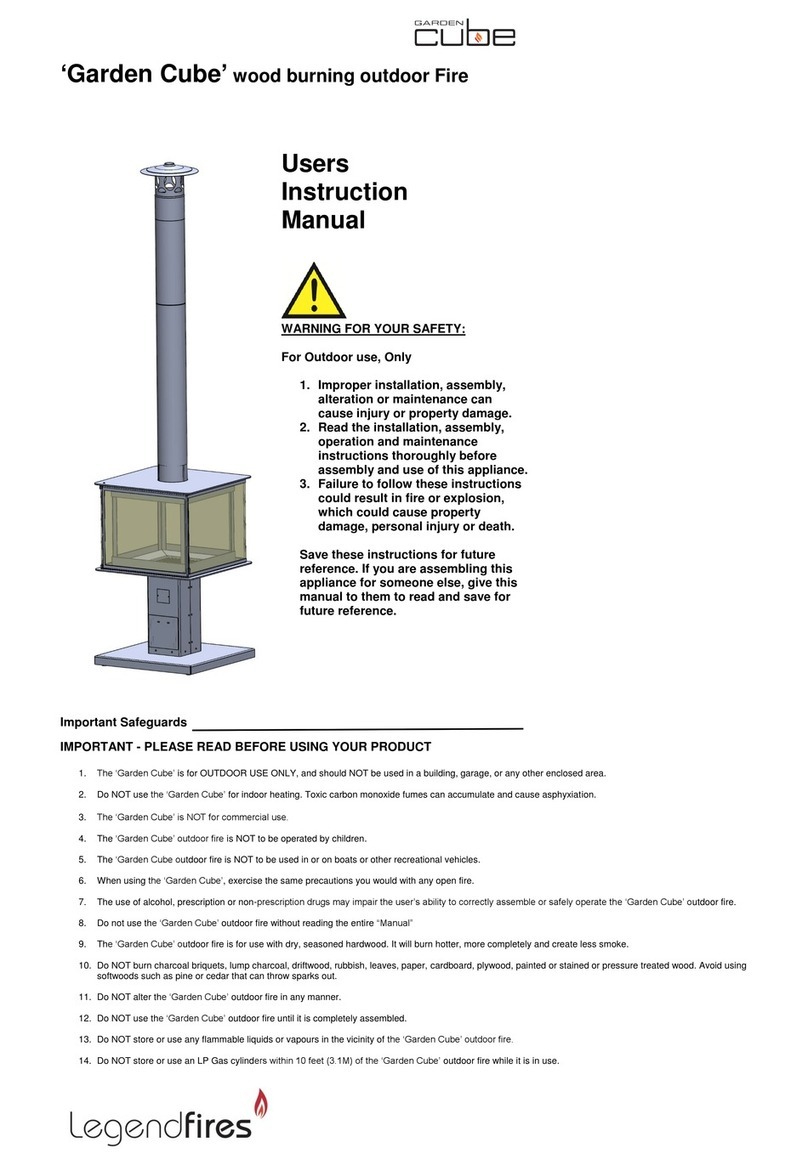
This appliance must only be installed in Great Britain or Ireland.
1. This fire is a natural gas appliance and has been designed for use with the following applications:
a) Class I - Conventional brick or stone chimney as used for a solid fuel fire with a cross sectional dimension of
225mm x 225mm (9” x 9”) or a lined flue with a minimum diameter of 125mm (5”), with the fireplace components
conforming to BS1251, or a standard builders opening a minimum of: 560mm (22”) high and 406mm (16”) wide
with a minimum depth of 100mm (4”) to allow sufficient volume for debris collection (unlined chimney 12 dm3and
lined 2 dm3). Any permanent flue restrictions or variable dampers are to be removed or locked in the fully open
position. The chimney should also be swept prior to installation.
b) Class II - An insulated flue (twin wall) having a minimum diameter of 125mm (5”) and a minimum effective
overall height of 3 metres (10’).
OTE: If the fire is to be used with an existing brick or stone chimney, a 125mm (5”) minimum diameter flue
liner conforming to BS715 may be used.
2. Care should be taken to prevent any damage being caused to surrounding soft furnishings or decoration, e.g.
many embossed vinyl wall coverings may become discoloured if placed too close to the appliance.
3. A suitable proprietary fire surround with 100°C rating may be used with a minimum clearance from the top of the
stove to the underside of shelf of 225mm, providing that the depth of shelf is 150mm or less. It is recommended
that combustible materials are not placed adjacent to this appliance unless shielded with a fire resistant surface
25mm minimum thickness.
FLUE FLOW TEST
A flue flow test (smoke test) is carried out to check the effectiveness of the flue and to ensure that there is no
leakage into another part of the premises (including any loft), or as appropriate other adjoining premises (this is
particularly important where a number of chimneys combine into a multiple stack).
The flue flow test should be carried out using a suitable smoke pellet which the pellet manufacturer claims to
generate 5m3of smoke in 30 seconds burn time.
These gas fires should have the flue flow test carried out with the appliance in position but not connected to the
gas supply so that the smoke test can be carried out with representative flue flow conditions.
A warm flue will be more effective than a cold flue. If the flue is reluctant to draw, which can be initially assessed
by lighting a smoke match at the intended position of the appliance flue connection, introduce some heat into the
flue for a minimum of 10 minutes using a blow torch or other means.
Other factors, such as weather conditions and a combination of materials used to construct the flue can all
influence the flue draught. The pre-heating process may require as much as half an hour before the flue behaves
satisfactory as a blow torch does not represent the volume of heat consistent with the normal appliance operation.
A Flue Flow Test should be checked as follows:
1. Carry out those visual checks as indicated previously, and continue only if satisfactory.
2. Establish that an adequate air supply is available for the combustion of the appliance
3. Close all doors and windows in the room that the appliance is to be installed.
4. Light a smoke pellet at the intended position for the appliance. Place the inset fire case into position.
5. The test is satisfactory if:
- there is no significant escape of smoke from the appliance position.
- there is no seepage of smoke over the length of the flue.
- smoke is discharged only from the correct terminal.
VE TILATIO
No special ventilation bricks or vents are required in the room containing the appliance, providing that normal
adventitious room ventilation exists. The installer must determine this by carrying out a spillage test.
SPILLAGE TEST
To check for satisfactory clearance of products of combustion, close all doors and windows and leave the fire
burning on high setting for a minimum of ten minutes. The left and right hand ducts are for convection only. The
central duct above the glass door has a visible hexagonal post in the middle, this post indicates the approximate
depth to place a lit smoke match. All the smoke must be drawn into the flue. If spillage occurs, allow a further ten
minutes and repeat the test. Should spillage still occur turn the appliance off and seek expert advice. To continue
the test: If an extractor fan is situated in the room the test should be repeated with the fan running. If there is a
connecting room with an extractor fan the test should be repeated with all the doors to that room open and the
extractor fan running.
I STALLATIO REQUIREME TS
6

